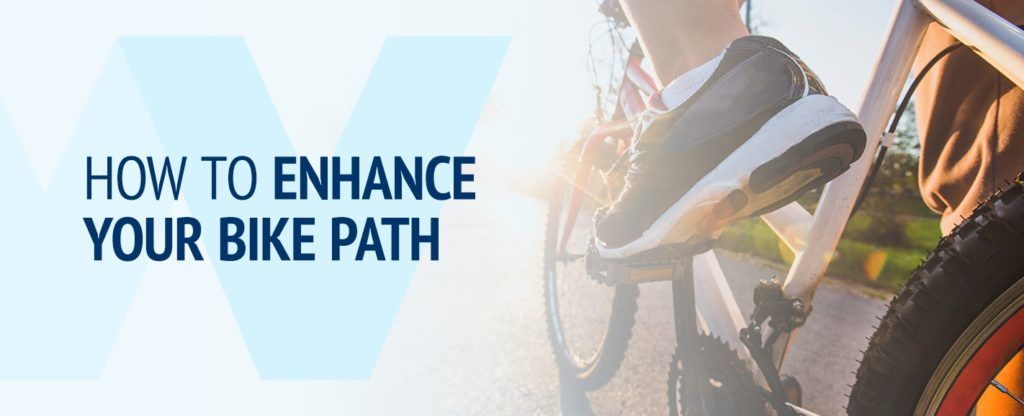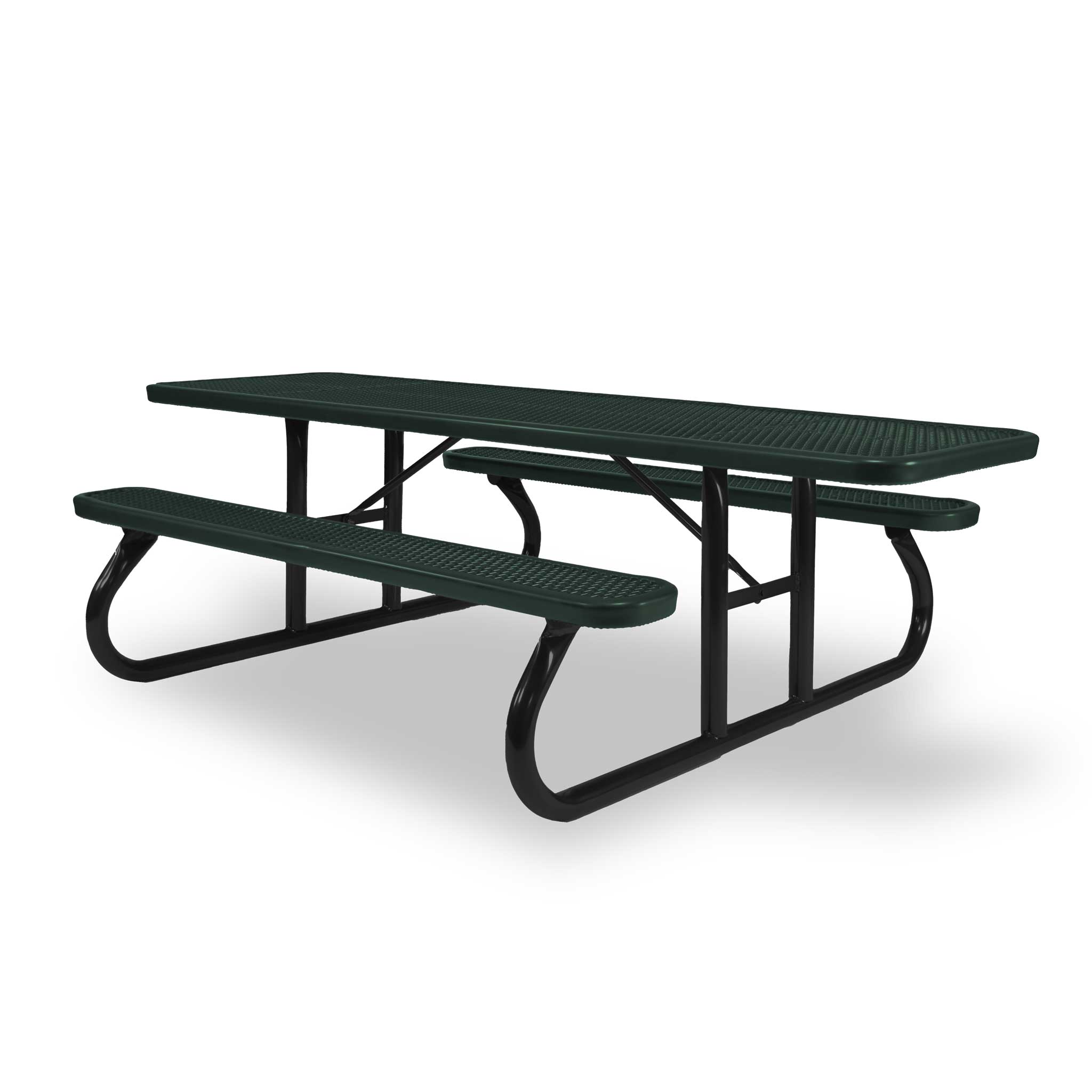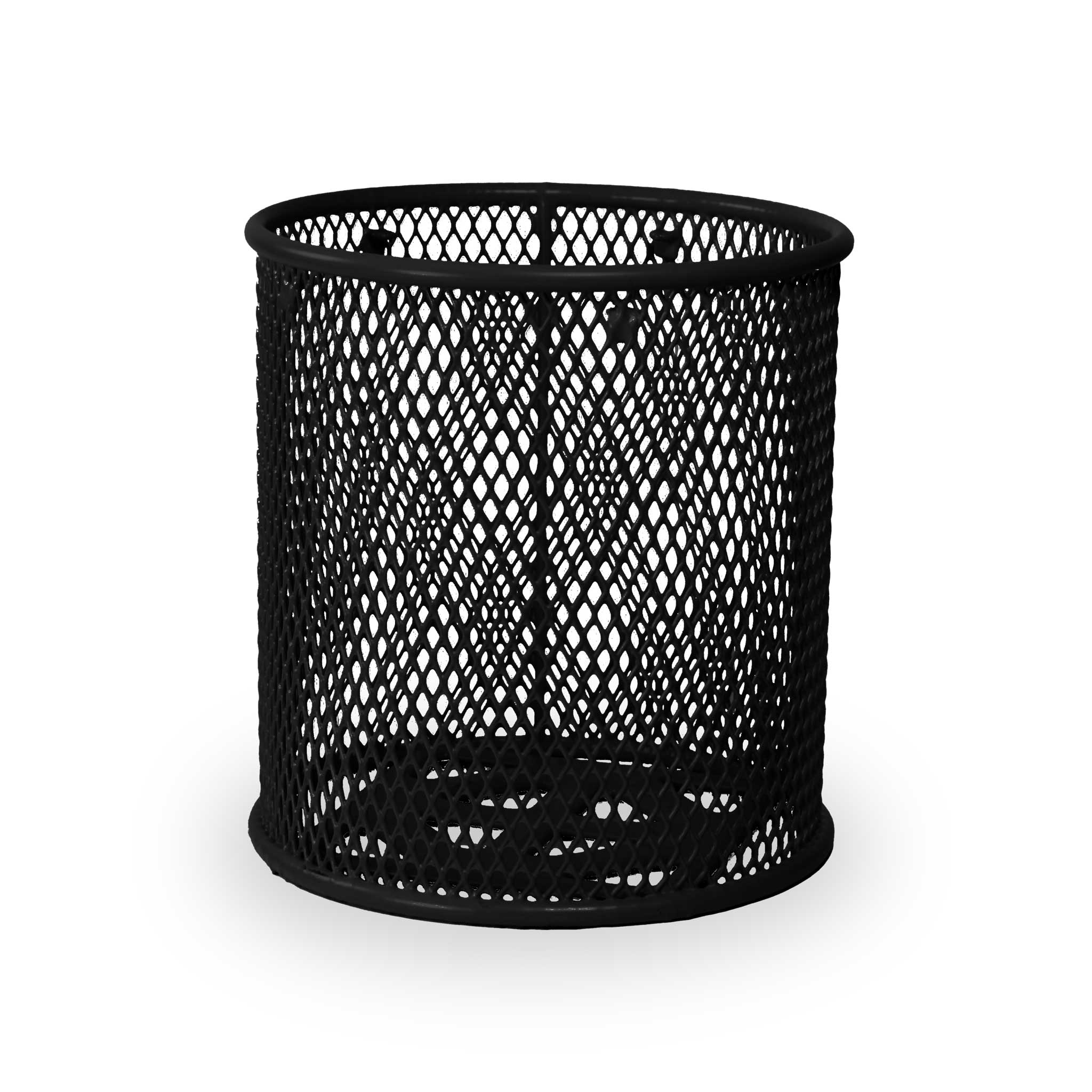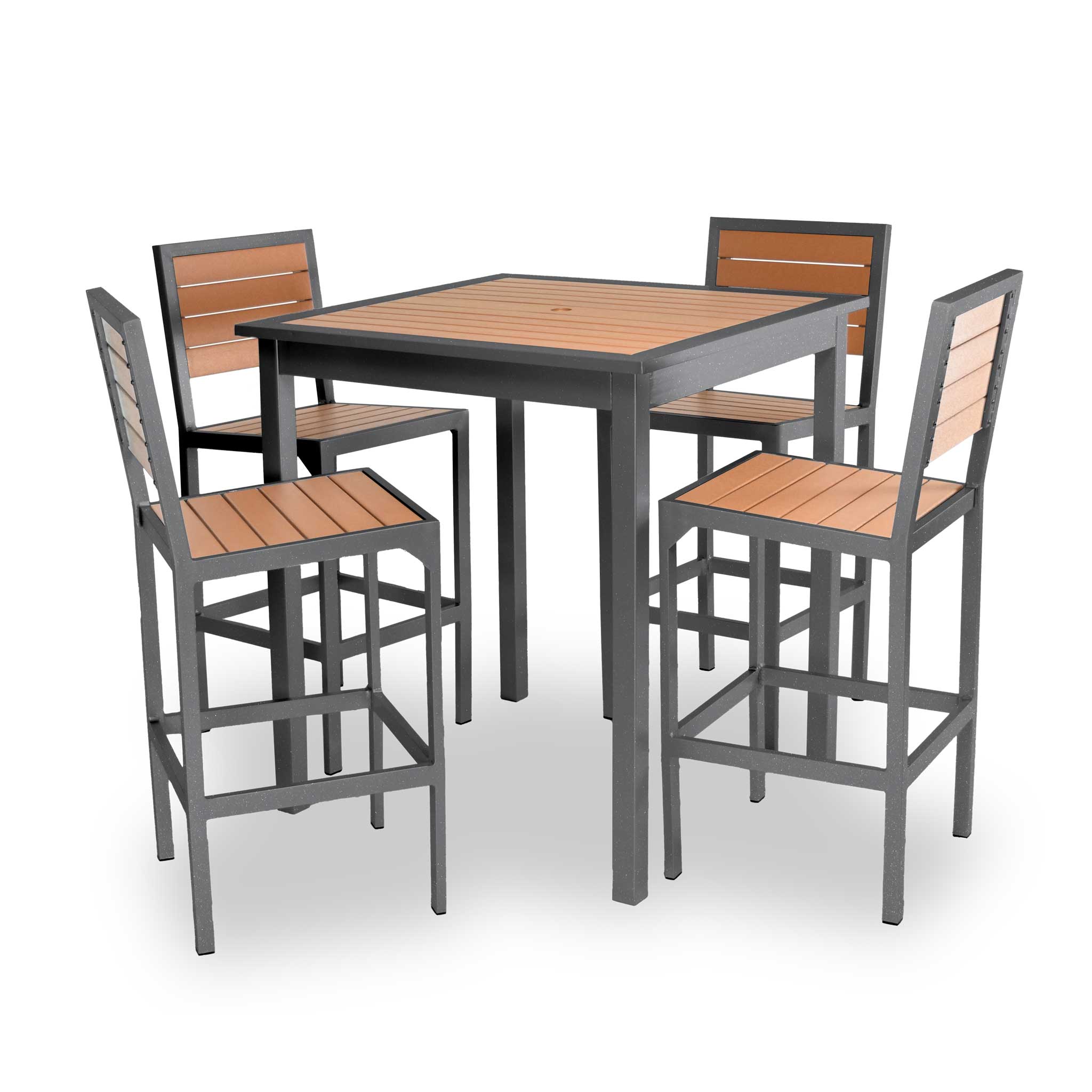How to Enhance Your Bike Path

Resources | Dec 22, 2020
In the past few years, over 47.5 million people — almost 13% of the American population — enjoyed cycling during their free time. Besides being recreational and an excellent way to get fresh air and exercise, cycling is also an efficient form of transportation. For these reasons, it’s essential to design a bike path for all lifestyles and athletic levels.
Here, we’ll walk you through how to plan and design your bike trail, as well as the best bike trail site amenities to keep your path fun, safe, and comfortable.
How to Design and Enhance Your Bike Trail Site
Whether you’re starting from scratch or looking for ways to enhance your existing bike trail site, you’ll want to revisit the foundational elements of what makes a successful bike trail. These foundational elements include:
- Understanding who’ll be using your path.
- Finding the right trail type to match your geographic location and users’ needs.
- Outfitting your bike trail site with the right furnishings.
To set a solid foundation for a successful bike site, consider the following steps.
1. Determine Your Trail’s Users
The first step in planning a bike trail is to gather a general sense of who will be using it. Trails attract a variety of people, so expect others besides cyclists to visit your site.
Common trail-goers include these types of people.
- Bicyclists: Of course, if you’re planning on building a bike trail, you should expect bicyclists to frequent your path. Bicyclists fall into two categories — leisure and mountain bikers. Mountain bikers enjoy the thrill of rugged terrains, while leisure bikers prefer paved surfaces with a minimal grade.
- Pedestrians: As a broad category, pedestrians include walkers, joggers, hikers, runners, birdwatchers, or any other engagement with your path that doesn’t require recreational equipment, such as bikes.
- Dog walkers: Four-legged friends enjoy trails, too. Pedestrians walk their dogs along paved or unpaved paths, through rugged terrain, and on urban trails. So, if your path accommodates pedestrians, play it safe and accommodate dog walkers, too.
- Equestrians: Some equestrians enjoy bringing their — much larger — four-legged friends outside the riding arena and onto a trail. Horses prefer walking on soft, porous pavement or unpaved trails, as it adds protective cushioning to their hooves for a more comfortable ride.
As you’re painting your mental picture of who will be using your trail, start thinking about your overall aesthetic and goals. Do you want to welcome all trail-goers? Or, would you prefer to target a thrill-seeking group of users who enjoy mountainous terrain and steep slopes? What about the opposite, suited primarily for pedestrians and bicyclists in urbanized areas?
With your defined users, aesthetic, and goals in mind, you can start thinking of the different types of trails that complement them.
2. Consider the Different Types of Trails You Can Design
For bicyclists, you can design a few different types of trails, such as a:
- Multi-use trail.
- Urban trail.
- Unpaved trail.
The trail you design mostly depends on the area in which you’re planning to build, along with the users you wish to accommodate. The American Association of State Highway and Transportation Officials sets guidelines for these different types of trails, so consider the legal requirements when choosing a trail type, too.
With these factors in mind, consider the following varieties of trails and their generalized requirements.
Multi-Use Trail
If you want to accommodate many different people, you might want to opt for a multi-use trail. As their name implies, multi-use trails are paths that pedestrians, bicyclists, and equestrians alike can enjoy for many recreational activities.
Guidelines require multi-use trails to have:
- Wide paths, no narrower than 12 feet.
- Extended shoulders, a minimum of 2 feet.
- A minimum clearance of 12 feet in height.
- Porous paving with soft-surface, unpaved shoulders.
- Standard trail furnishings, such as signage, benches, drinking fountains, and mounting blocks.
Multi-use trails are great options because they welcome users of all interests and athletic levels. Bicyclists who enjoy different types of cycling will appreciate this. For example, a bicyclist could use the same trail to enjoy an intense, fast-paced bike ride one day, and a leisurely ride with their children the next.
One downside of multi-use trails, however, is the complication of designing them in urbanized areas.
Urban Trail
Urban trails are narrower than multi-use trails, which restricts some recreational activities but is largely beneficial for people who rely on bicycles as a means of transportation.
These trails run parallel to urban streets, often connecting different landmarks such as grocery stores, workplaces, and gyms. Bicyclists may use your trail to travel to and from work, to pick up groceries, etc. Or, pedestrians may use your trail for an afternoon stroll or a jog with their dog.
Guidelines require urban trails to have:
- Paths are approximately 10 feet wide.
- Shoulders approximately 2 feet wide.
- A minimum clearance of 12 feet in height.
- Porous paving — when opting for a hard-surface trail — with soft-surface, unpaved shoulders.
- A safety clearance of 1 foot.
- A landscaping buffer of 5 feet.
- Standard trail furnishings.
Depending on your geographical location, designing and building an urbanized bike trail could be your best option. You may opt for this type of trail if your ideal users prefer a relaxed path for daily convenience and recreational fun.
Unpaved Trail
While a majority — 39.39 million — of bicyclists prefer paved trails, a whopping 8.62 million bicyclists say they enjoy the added sense of adventure unpaved trails provide. Typically, you can find these pathways in parks or rural areas, where guidelines require:
- Paths are approximately 10 feet wide.
- Shoulders approximately 2 feet wide.
- A minimum clearance of 12 feet in height.
- Crushed gravel or similar-material trail surface.
- Standard trail furnishings.
- A minimum clearance of 8 feet.
If you’re in a hilly or mountainous area, and your trail’s aesthetic targets thrill-seeking mountain bikers, you may consider building a dual hiking-and-mountain-biking trail. You may also want to build a flat, unpaved trail for pedestrians and bikers who enjoy nature, but have a lower athletic level or prefer a less strenuous hike or ride.
3. Make a List of Your Top Bike Trail Must-Haves
Picking the right trail type and constructing a physical path gives you a sound foundation. Now, start making a list of your must-have bike trail site furnishings, such as:
- Bicycle racks.
- Benches and tables.
- Drinking fountains.
- Restroom shelters.
- Trash receptacles.
- Dog waste receptacles.
- Informational signage.
Some of these examples are government requirements, and others are amenities to enhance the users’ experience. Also, bike trail furnishings are durable and built to last, especially in-ground furnishings that deter vandalism and stand strong against the elements.
Most furnishings are customizable, allowing you to choose different styles and colors to match your local township, user, and path aesthetic.
Bike trails usually have two furnishing points — the trailhead and the path itself. Trailheads are the public access points that mark the beginning of the path, and usually the end. You’ll want to put things like visitor guides, path maps, and public restrooms here. Paths require furnishings, too, to keep users safe, comfortable, and capable of staying for longer periods.
Consider the following bike trail site amenities during your design phase.
Bike Loops and Racks
Bicycle loops and racks are must-haves for your bike trail. For the majority of the time spent on your trail, bicyclists will be actively enjoying their bike ride. But, there will be times when they aren’t on their bike, like when using the restroom or admiring a scenic overlook.
Predict areas where bicyclists may want to stop, and strategically place bike loops and racks as a safe, temporary home for their bikes. These amenities will make cyclists feel more comfortable taking advantage of everything your trailhead and path has to offer.
Benches and Tables
Dedicated bicyclists usually enjoy bicycling with friends, family, or groups who share the same interest. Offer benches and tables at your trailhead and alongside strategized, spacious areas of your path, allowing bicyclists to enjoy a break and an engaging conversation with others.
Users will feel more comfortable staying active if they know there are rest areas where they can catch their breath. If your rest area doesn’t have natural shading, you also have the option of providing shelters or durable umbrellas. Plus, users can pack a picnic — or other recreational activities, like birdwatching binoculars or a favorite book — to enjoy at a shaded and convenient picnic table or bench.
Drinking Fountains
Keep your users hydrated by supplying drinking fountains at your trailhead. Users will likely be active on your path, so they’ll require water to keep themselves healthy and energized. Four-legged friends need water, too, so you may want to consider water fountain styles to accommodate their needs.
Restroom Shelters
Provide a clean restroom shelter for your users. Restroom shelters prolong your users’ stay, preventing them from having to leave your trail site to wash their hands or use the restroom. These types of shelters also protect users from the elements, like unforeseen thunderstorms.
If a restroom shelter isn’t compatible with your path, consider adding portable restrooms at strategized points of your trail or at the trailhead.
Trash Receptacles
Put trash receptacles around benches, tables, and other areas along your bike path. In doing so, users are more likely to dispose of trash appropriately instead of littering along your path and trailhead. If your trail path is in a more rural area, like in the woods, you may want to consider a secure receptacle lid and mount to prevent animals from rummaging through its contents.
Dog Waste Stations
Similarly, place dog waste stations fitted with an appropriate receptacle and disposable bags, allowing pedestrians to pick up after their four-legged friends. Supplying dog waste stations keeps your bike trail clean and encourages a better experience for your users.
Informational Signage
Informational signage is a lower-cost, effective furnishing for any trail. At your trailhead, share maps outlining your bike trail, so users have a general idea of where to ride or walk. Also, share any bike trail site rules and essential information the user should know before enjoying the trail’s amenities.
On the path itself, place mile markers and other geographical tools to guide users in the right direction. If your bike trail site offers multiple routes, consider color-coding each on your map and placing different-colored markers along the path, so people know they’re navigating the right trail.
Additional Bike Trail Features to Keep in Mind
When deciding which bike trail to construct, keep bicyclists at the forefront of your decision-making. Consider the following general features that will enhance your bike trail and entice bicyclists to want to use it:
- Bicyclists, namely leisurely riders, prefer hard path surfaces.
- Because they’re sitting higher off the ground, bicyclists require a higher vertical clearance than pedestrians.
- Ensure cyclists have a sight distance of at least 150 feet at every point of their ride.
- An ideal bike trail grade is 3% or less, with a maximum grade of 5%.
- Bicyclists require additional path furnishings, such as bike racks.
Perform some research within your area and see what’s already available. Are any current paths attracting your local bicycling population? Ask bicyclists what they prefer, and use your survey findings to guide your decision on which trail you should build.
Browse Wabash Valley’s Wide Selection of Trail Amenities
At Wabash Valley Site Furnishings, we’re proud to offer durable, high-end furnishings to enhance your current or new bike trail. Bike trails are great resources for bicyclists and other outdoor enthusiasts to partake in recreational fun, and we want to help you deliver the best user experience for your trail to thrive.
For over 30 years, we’ve helped outfit commercial outdoor furniture for various industries and locations, from urbanized trails to deep-wood mountain biking paths. We offer outdoor furnishings like:
- Outdoor benches.
- Picnic tables.
- Game tables.
- Dining sets.
- Trash receptacles.
- Receptacle lids, liners, and mounts.
- Umbrellas.
- Bike loop racks.
- Shelters.
- Swings.
Make your trailhead a family-friendly destination with dining sets, shading, trash receptacles, game tables, and swings. Then, transform your path using shelters, bike loop racks, and outdoor benches so your users can enjoy their ride — and your bike trail site — more comfortably.
Our furnishings come in a wide range of styles and colors, so you’re sure to find something to match your bike trail’s aesthetic and goals. We also offer in-ground, portable, and surface-mount varieties, suited to your bike trail site’s unique characteristics.
Visit our website and browse our catalog for more information on how we can help you. Our experienced team will work with you to create a bulk order to complement your bike trail site’s needs — and your budget. Or, if you have any questions, contact us online.
Categories
Recent Posts
Sign up for our newsletter
Share this post:








